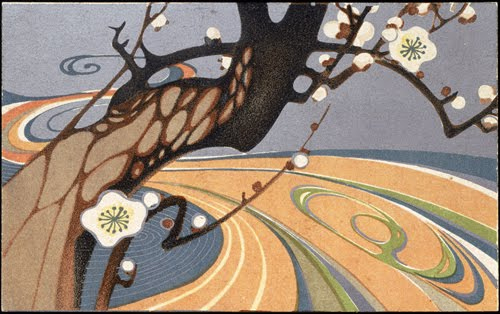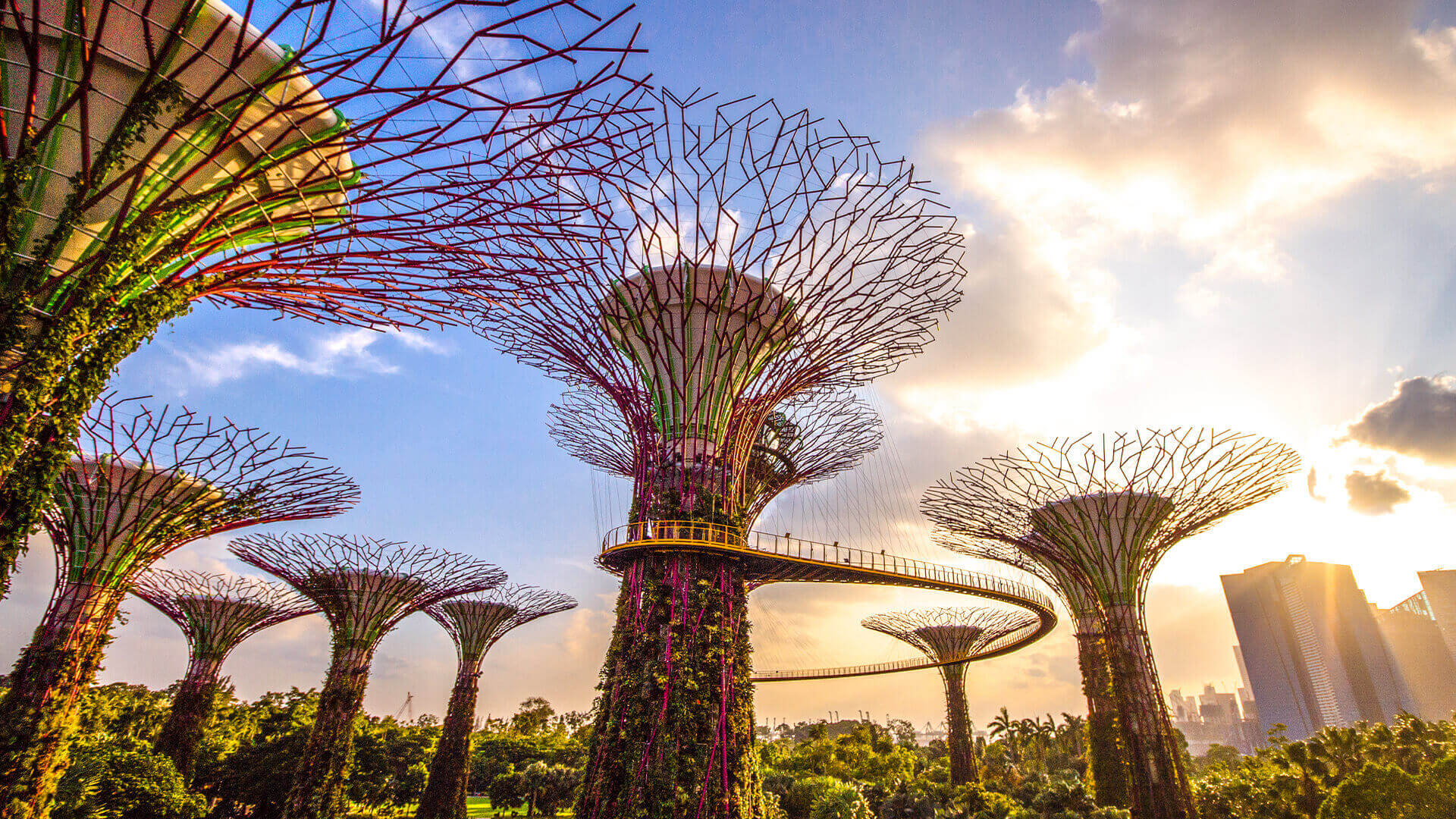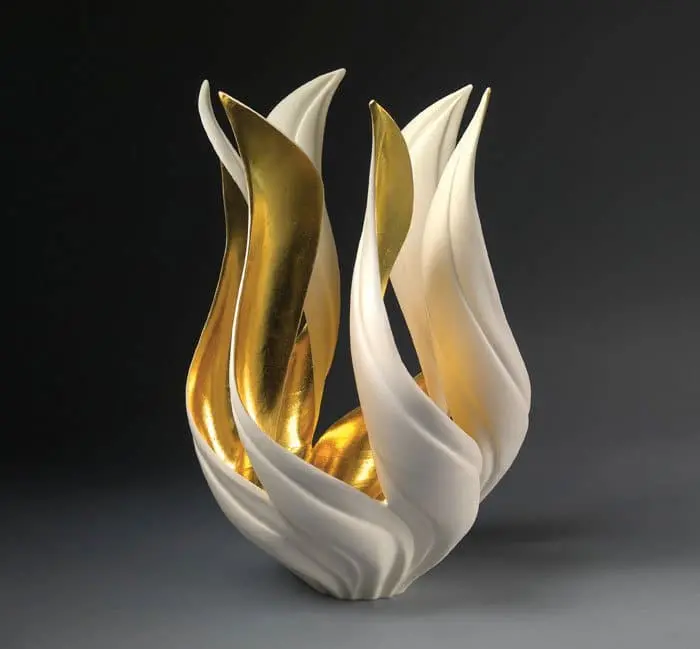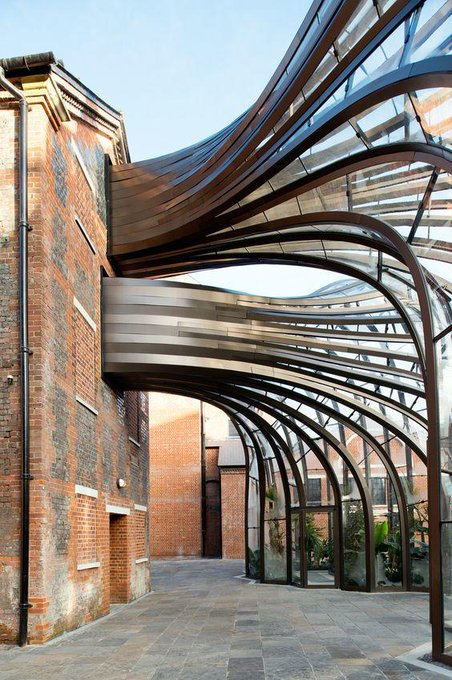Is Art Nouveau the Future of Architecture?
 |
| © Dover Publications |
All across Europe, scrolling vines and metal flowers weave across iron railings and carved doors. Art Nouveau is a movement that is often associated with a brief moment in the past. Yet, if one looks closely, is it clear that Art Nouveau continues to influence and inspire the present and future of the design world.
Originally, Art Nouveau was meant to be the style of the future. Its swirling, vining forms twined through the most forward-thinking architectural works of the time, from the Eiffel Tower cafe to the spires of La Sagrada Familia. It was like it suddenly sprouted from the pavement of the most avant-garde cities of the age. Contrary to this first impression, there was an unseen web of factors behind the popularity of Art Nouveau.
 |
| Art Nouveau exterior of the Pavilion Bleu, a cafe that was located on the Eiffel Tower site for the 1900 World's Fair |
Like every design movement, Art Nouveau was a reaction to the particular challenges of the era. In the late 1800s, France was still experiencing the effects of the French Revolution and the aftermath of Napoleon's dictatorship. One of these effects was a return to the orderly, rational Gothic style, as a response to the overly pompous Rococo or Second Empire styles that had characterized French architecture over the last centuries. However, this meant turning away from the progress that was associated with cities like Paris and returning to a style that was already over 500 years old. The Arts and Crafts and Gothic Revival movements were attempts to bring back the craftsmanship of previous centuries by rejecting industrialization. This rejection made these styles feel dated, especially considering that Europe was experiencing an industrial revolution, which lead to massive innovations in architecture like iron-frame construction. Why conceal progress behind an centuries-old Gothic facade?
 |
| St. Louis Royal Chapel in the Neo-Gothic Style |
 |
| Art Nouveau Comb, Henri Dubret |
Another factor that lead to the rise of Art Nouveau was the opening of trade between Europe and Japan. Japanese art and design was a subject of much fascination, especially in France. Common elements of Japanese design like elegant woodblock prints, curving lines, pastel tones, and asymmetry all had a great deal of influence on European designers. This influence also went the other way, with Art Nouveau artwork like the example below being created by Japanese artists.
 |
| Nagoya Design Association, postcard: Blossoming Plum Tree by a River, ca. 1905–1910. Color Lithograph on card stock, 3 ½" x 5 ½" (8.8 x 13.8 cm). © Museum of Fine Arts, Boston. (MFAB-1076) |
All of these factors and likely many more led to the creation of a new style. Known in some places as Art Nouveau, other places as Modernista or Stile Liberty, it was a style defined by synthesis from cross-cultural aesthetics using newly developed materials and techniques. Every culture developed a different form of it, but it was always simultaneously unusual, elegant, and modern. It follows the aesthetic ideals of the biological world in a way that rejects reason and order.
| Casa Batllò, Antoni Gaudí. © 2017 Ira Block |
Both inside and outside the design community, I have observed mounting frustration with a perceived loss of artistry in modern design. Many of the blocky, glass Modernist structures that fill cities are beginning to feel like they have failed in their promises. New houses and apartments feel increasingly mass-manufactured, with blocky five-over-one residential buildings homogenizing cities across America. Like the Gothic buildings with iron frames of the 1890s, cubic concrete structures dressed up with faux columns or wood are beginning to be viewed as insincere. Perhaps we are all craving something new, something both genuine and beautiful.
 |
| Zaha Hadid, 1000 Museum |
While buildings that reference Art Nouveau concepts are not mainstream yet, there are several examples of celebrated architectural works that exhibit Art Nouveau characteristics. Zaha Hadid's 1000 Museum in Miami, Florida (pictured above), is an example of how this style can be adapted to modern contexts. The building's sinuous, elegant curves are both structural and beautiful, using steel-frame construction as an art form. The Supertree Grove in Singapore (pictured below) uses exposed steel to create metal trees that appear simultaneously enormous and delicate. The few examples of buildings that embody the ideas of Art Nouveau are not enough to validate the existence of an Art Nouveau rebirth. But their widespread acclaim does suggest that the ideas behind these structures are valued.
 |
| Supertree Grove, Grant Associates |
With recent advancements like computer enabled algorithmic design and new types of steel frame structure, the architectural world is poised to undergo a massive shift in stylistic preference. With modernist skyscrapers turning skylines into rigid glass grids, both designers and the public long for novelty. Perhaps, many will find it in an odd, lovely, 130 year old style.

 |
| Val-de-Reuil City Hall © Isabelle Duffaure-Gallais |
 | |||
|
 | |||
Stairstalk by Atmos Studio
|
 |
| Gilded Fire Vessel by Jennifer McCurdy |
 |
| Bloomhouse, Austin TX |
Sources:
Escritt, Stephen, Art Nouveau. The Colour Library of Art, 1969.
Hodge, Susie, The Short Story of Architecture. Laurence King Publishing. 2019.
Harmsen, Olga, Art Nouveau is back! About Art Nouveau, https://aboutartnouveau.wordpress.com/2015/11/20/art-nouveau-is-back/
The Editors of Encyclopaedia Britannica, Art Nouveau. Britannica. https://www.britannica.com/art/Art-Nouveau
The Editors of Encyclopaedia Britannica, Eugène-Emmanuel Viollet-le-Duc. Britannica. https://www.britannica.com/biography/Eugene-Emmanuel-Viollet-le-Duc
The Editors of Encyclopaedia Britannica, Second Empire style. Britannica. https://www.britannica.com/art/Second-Empire-style
The Editors of Encyclopaedia Britannica, Gothic Architecture. Britannica. https://www.britannica.com/art/Gothic-architecture
The Editors of Encyclopaedia Britannica, The First Industrial Age. Britannica. https://www.britannica.com/technology/construction/The-first-industrial-age
Tanenbaum, Morris, Mass Production. Britannica. https://www.britannica.com/technology/mass-production
Cole, Karl, Japanese Art Nouveau. Davis, https://www.davisart.com/blogs/curators-corner/japanese-art-nouveau/
Wanczura, Dieter, Art Nouveau. artelino, https://www.artelino.com/articles/art_nouveau.asp
Artist Jennifer McCurdy Creates Stunning Nature-Inspired Vases, Awesome Inventions. https://www.awesomeinventions.com/nature-inspired-vases/
The MNC Editorial Team, The Eiffel Tower’s Lost Art Nouveau Restaurant. Messy Nessy Chic, https://www.messynessychic.com/2022/02/10/the-eiffel-towers-lost-art-nouveau-restaurant/


Comments
Post a Comment